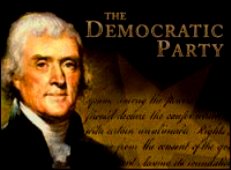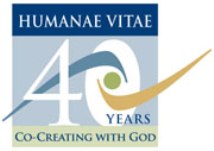There is a growing mindset among many Christians that the tradition of the Roman Catholic Church contradicts Sacred Scripture. This is unquestionably the effect of the "sola scriptura" mindset that is very common among non-Catholic Christians. The entirety of this dilemma cannot be exhausted here, but a great deal can be said about this concern.
The canon for the Christian scriptures as we have them today was formally declared centuries after the passion, death, and resurrection of Jesus Christ. When St. Paul, the earliest Christian writer spoke of "the gospel that I preach," (Romans 16:25), he was not speaking about one of the four canonical Gospels; in the primitive Church, the term "gospel" did not refer to any book as they had yet to be written, but the good news of salvation won for us in Christ Jesus. Similarly, St. Paul often mentions the "Scriptures" in his letters, but he is referring only to the Old Testament. The early Christians were Jews who believed that God fulfilled His promise to Israel and "dwelt among us" as Jesus of Nazareth. In fact, the term "Christian" was applied from the outside by pagans.
The earliest believers considered themselves Jews whose God had fulfilled the messianic promise of the Old Testament. They gathered together for "the breaking of the bread," which is the earliest form of the Christian liturgy. An early Christian liturgical manual called the Didache, or 'Teaching of the Twelve,' written in the first century A.D. gives instructions regarding baptism and celebration of the Eucharist.
The sacraments were already 'the source and summit' of the Christian life. The sacrifice of the Mass was explicitly of the utmost importance. "On the Lord's Day...gather together, break bread and offer the Eucharist, after confessing your transgressions so that your sacrifice may be pure. Let no one who has a quarrel with his neighbor join you until he is reconciled, lest our sacrifice be defiled. For this is that which was proclaimed by the Lord: 'In every place and time let there be offered to me a clean sacrifice. For I am a great king,' says the Lord, 'and my name is wonderful among the gentiles' [cf. Mal. 1:11]" (Didache 14:1–3).
The same text shows us that the Sacrament of Reconciliation had begun to take shape. In Scripture, Christ told His Apostles, "As the Father has sent me, even so I send you...Receive the Holy Spirit. If you forgive the sins of any, they are forgiven; if you retain the sins of any, they are retained," (Jn 20:21-23). This is reflected in the Didache where the Apostles teach Christians to confess their sins: "Confess your sins in church, and do not go up to your prayer with an evil conscience." (Didache 4:14 [A.D. 70]). This same reality continues as we find St. Basil preaching the same thing three centuries later: "It is necessary to confess our sins to those to whom the dispensation of God's mysteries is entrusted. Those doing penance of old are found to have done it before the saints. It is written in the Gospel that they confessed their sins to John the Baptist [Matt. 3:6], but in Acts [19:18] they confessed to the apostles" (Rules Briefly Treated 288 [A.D. 374]).
There is a specific belief in the Real Presence of Christ in the Eucharist. Christ is the bread of life and the Apostles and all the believers gathered together in communion to "eat his flesh and drink his blood," so that they may have eternal life. It is because of the belief in the transubstantiation of the bread and wine into the Body and Blood of Jesus Christ, St. Paul wrote "[w]hoever...eats the bread or drinks the cup of the Lord in an unworthy manner will be guilty of profaning the body and blood of the Lord" (1 Cor. 11:27). Thus, Scripture affirms that those who consume the Eucharist unworthily (in a state of mortal sin) eats and drinks "condemnation" (1 Cor 11:29) onto themselves.
To further the point of the Catholicity of the early Church, consider the Gospel of Mark for a moment. He repeatedly defines and explains things about the Jewish way of life. Why? Historically, we know that Mark was writing to a non-Jewish community—Gentiles—who knew nothing of Jewish customs. He was evangelizing a specific community of people. In the Gospel of Matthew, which was directed to a predominantly Jewish audience has Jesus give the Beatitudes on the Mount. It obviously highlights that Christ is the new Moses as Moses gave the Commandments on Mount Sinai; the focus on Old Testament fulfillment would be key in evangelizing Jews. In the Gospel of Luke, however, the sermon is given on a plain. Luke is writing to Gentiles not Jews, so the allusion to the prophet Moses is useless because it would not resonate with their religious experience.
Not only were the Apostles recording the life and teachings of Jesus Christ, but they were evangelizing. Another case is found in John, where he defines: Rabbi (Teacher), Messiah (Christ), and Cephas (Rock) within three verses (John 1:38-42). This suggests that he had a non-Jewish audience or an audience that extended beyond Jews. Moreover, he is the last to write his Gospel, which explains why he doesn't re-write much of the same material that is in the Synoptics (Matthew, Mark, and Luke) which had already circulated around in Christian communities. And because it is so much later (he makes reference to Christians being banned from the synagogues in A.D. 87), it makes sense that he has a radically different purpose in writing his Gospel, namely to make a case against the Jews who reject Christ. It is held definitively by the Church that the Gospels are inspired by God, but the historical circumstances in which they were written are revelatory. There is a particular purpose and audience that the writer is considering. Moreover, the fact that they are writing implies that the Christian population had grown to such a degree that the oral tradition was no longer sufficient.
In addition, we know of the epistles of Paul, Peter, John, and James. But there are also other non-canonical epistles that were not included in the canon of Scriptures. Pope Clement I, the fourth Pope of the Church, wrote a letter (perhaps two) to the Corinthians that scholars date to 94-97 A.D. St. Ignatius wrote a letter to the Ephesians, to the Romans, and even one to St. Polycarp. St. Polycarp was a disciple of the Apostle John and Bishop of what is today is Izmir in Turkey; he wrote a letter to the Philippians. It becomes clear the more you study the Scriptures and how they came to be, in the light of the tradition that the Apostles spread throughout the known world, proclaiming the Gospel, founding individual churches as part of one Church. The Christian community grew to such an extent that they even began to delegate men to share in their power. The Apostles ordained "bishops," who were their direct equals, sharing in their apostolic mission.
In Acts 14:23, St. Paul the Apostle ordains elders in the churches he founded. Early Christian writings from the Didache to Pope Clement I’s Letter to the Corinthians show that the Church recognized two local church offices—elders (interchangeable term with overseer) and deacons. The beginnings of a single ruling bishop can perhaps be traced to the offices occupied by Timothy and Titus in the New Testament. We are told that Paul had left Timothy in Ephesus and Titus in Crete to oversee the local church (1 Tim 1:3 and Titus 1:5). Paul commands them to ordain bishops/presbyters (priests) and to exercise general oversight, telling Titus to "rebuke with all authority" (Titus 2:15).
It is certain that the office of "bishop" and "presbyter" were clearly distinguished by the second century, as the Church was facing the dual pressures of persecution and internal schism, resulting in three distinct local offices: bishop, elder (presbyter) and deacon. The tradition of reserving ordination for men, too, was already in place: "If women were to be charged by God with entering the priesthood or with assuming ecclesiastical office, then in the New Covenant it would have devolved upon no one more than Mary to fulfill a priestly function. She was invested with so great an honor as to be allowed to provide a dwelling in her womb for the heavenly God and King of all things, the Son of God...But he did not find this [the conferring of priesthood on her] good" (Against Heresies 79:3 [A.D. 377]).
There were certainly women deaconesses in the past who assisted with ministering to women specifically with baptism; but these women were often the wives of deacons and the status of deaconess was not an ordained office. A shade of this can be seen in the East by "presbyteras"—the wives of ordained priests who, without being ordained or demanding to be made a priestess, faithfully assist their husbands in their ministerial tasks.
All of this is simply the result of a developing tradition of the Church that comes from the Apostles. It is the lived experience of Christianity and of the Church in its mission to teach the world the Gospel of Jesus Christ. The Bible as we know it was not in its current form. The first list of "canonical" books that names the same twenty-seven writings found in our New Testament appears in the Easter letter of St. Athanasius, Bishop of Alexandria in 367 A.D. By the time of Athanasius, the Church had reached an informal consensus about most of the writings to be included in the "New Testament."
There is evidence that Paul's letters had been collected by churches in several geographical locations by the end of the first century A.D. In a letter sent from Rome, written by Pope Clement I, to the church in Corinth, he writers (1 Clement 47:1): "Examine the letter of the blessed Paul the Apostle. What did he write to you at first, when he was just beginning to proclaim the gospel?" This is a reference to Paul's first letter to the Corinthians. It indicates that the Christians in Rome owned a copy of it and that the church in Corinth still had a copy in its possession, half a century after Paul wrote it. The author of the second letter of Peter also knows about a collection of Paul's letters (3:15–16) and assumes that his readers do as well. Also in the early second century, St. Ignatius, Bishop of Antioch, wrote letters to seven churches while he was en route to Rome, where he was martyred. In his letters he uses language that clearly shows his familiarity with the letters of Paul. He refers to Paul frequently by name. Such evidence is clear: by the turn of the first century a number of churches had already acquired copies of Paul's letters for their use. The formative stage of a canonical collection of Paul's writings had already taken place.
The point is this: it was a long time before Christian writers used the books of the New Testament books as Holy Scripture, equal in authority with the Old Testament. Some books were even questioned because of its heavy use by heretics (including the Gospel of John). Other books were considered (some of which don't espouse heresy) but did not make the canon: the Epistle of Barnabas and the Epistle of Clement, for example. The Apostles were all Jewish and they used the Old Testament to show how Christ fulfilled all the prophecies and that was sufficient enough. They did not deny as Jews the revelation of the one God, but they had to incorporate into their prayers and preaching the figure of Jesus.
This is where the Doctrine of the Holy Trinity came from—where we learn that God is Three Persons in One Being, for we see distinctly the Father, the Son, and the Spirit. It is not explicitly written in Scripture, but the understanding is there. St. Paul writes in Gal 4:4-7, "When the time had fully come, God sent forth his Son, born of a woman, born under the law, to redeem those who were under the law, so that we might receive adoption as sons. And because you are sons, God has sent the Spirit of his Son into our hearts, crying, 'Abba! Father!' So through God you are no longer a slave but a son, and if a son then an heir."
"It is then in the fullness of time, that is, at the moment of the fulfillment of all the prophecies and expectations of ancient times, as the climax of God's revelation to man of his saving purposes" (cf. The Evidence of the Mystery of the Trinity in the New Testament) that God sends his Son and the Spirit that proceeds from Him (the Father) through His Son—so revealing to us his trinitarian inner life. John the Baptist declared to the Jews that "I baptize with water," but he prophesized that one will come after him who will "baptize with the Holy Spirit." And it is thus: the Son is sent to redeem us and to give us "Son status," to be sons in the Son, so that we can pray the prayer of the Son, "Abba, Father" because we were baptized in "spirit and in truth," thus, receiving the Spirit of the Son, which came to the Son from the Father (this is how Catholics came to the notion of the filioque). The Catholic doctrine of the Holy Trinity is not scripturally explicit, but it is implicit; Scripture flows from the teaching-tradition of the Church. The Church simply definitively states this so that it is more clear and concise. Moreover, the "definitive" nature of doctrine came from combating heresies that declared such fallacies as Christ being only divine and not at all human.
Even the Catholic liturgy itself is actually very Jewish because the Jewish faith is God's original dispensation for His salvific acts and the Apostles themselves were Jewish. In the synagogue the Jews read from the Scriptures, sang psalms and hymns of praise. There is a continuously lit lamp, we still have them today in every Catholic Church usually near the tabernacle symbolizing God's eternal presence. There is an Ark that holds the Ark of the Covenant, which contains the tablets with Ten Commandments. It is the holiest spot in the synagogue. For us it is the tabernacle, which holds for the Body of Christ, which is the sign of the new and everlasting covenant. He is the Lamb of God, put to death on the day that lambs were being slain in Jerusalem for Passover. It is the fulfillment of the Old Testament prophecy and this mystery has made its way into the Christian tradition, not explicitly said in Scripture, but it is implied (and common knowledge) if one is following the Tradition.
The Eucharist is our Passover and we celebrate it daily. St. Paul wrote reflecting on the Jewish faith wrote "Christ, our paschal lamb, has been sacrificed. Let us, therefore, celebrate the festival...with the unleavened bread of sincerity and truth," (1 Cor 5:7-8). For by becoming one mystical Body of Christ, we pass over with him from death into eternal life. This is the fulfillment of God's promise of salvation that he made to our Father in faith, Abraham. And that is the heart of the Gospel protected and proclaimed by the Roman Catholic Church for 2,000 years. It is the in the Church that the Revelation of God to the Jewish people, fulfilled by Christ, preached by the Apostles and passed on, lives and is still preached to this day. The Bible came out of the Church and since the writers were of the One Holy Catholic and Apostolic Church, committed to unity, to the apostolic tradition, and proclaiming the Good News of Christ, one can see that The Bible testifies to "the Church of the living God, the foundation and pillar of the truth." (1 Tim 3:15).
Wednesday, March 12, 2008
The Catholic Faith and Sacred Scripture
Labels: apologetics, Catholic Tradition, Catholicism, Sacred Scripture
Subscribe to:
Post Comments (Atom)
This Catholic Loves Benedict XVI

Knights of Columbus: Champions for the Family

The Pro-Life Movement in the Democratic Party



































0 Comments:
Post a Comment